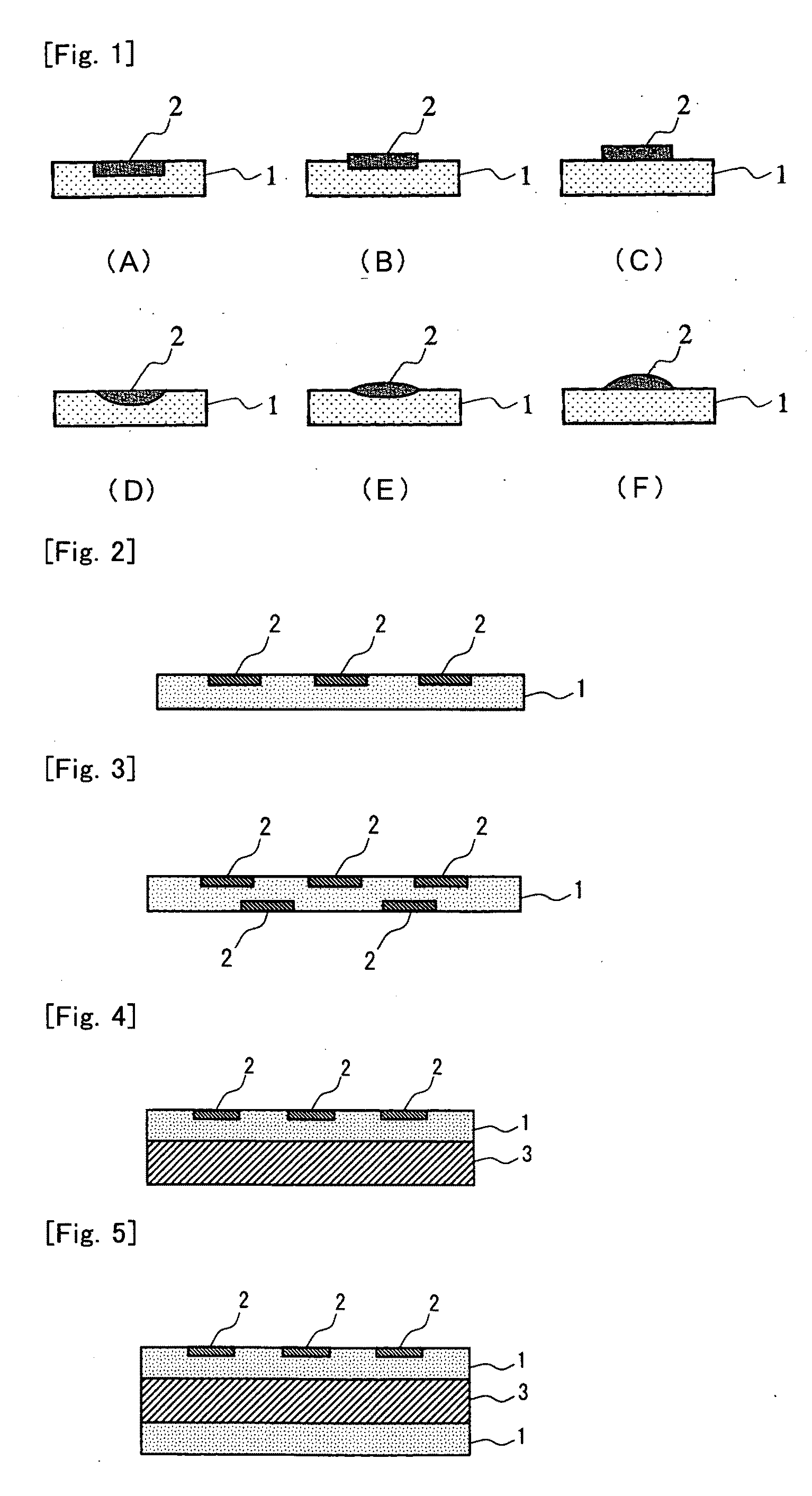Porous Film and Multilayer Assembly Using the Same
- Summary
- Abstract
- Description
- Claims
- Application Information
AI Technical Summary
Benefits of technology
Problems solved by technology
Method used
Image
Examples
example 1
[0434]A material composition for film formation was prepared by adding 30 parts by weight of a polyvinylpyrrolidone (having a molecular weight of 5×104) as a water-soluble polymer to 100 parts by weight of a polyamideimide resin solution (supplied by Toyobo Co., Ltd. under the trade name of “VYLOMAX HR11NN”; having a solid content of 15 percent by weight and a solution viscosity of 20 dPa·s / 25° C. in a solvent of NMP). While holding at 25° C., this material composition was cast onto PET film (Type S, 100 μm thick) supplied by Teijin DuPont Films Japan Limited as a base, using a film applicator under conditions of a gap (clearance) between the film applicator and the base of 127 μm. Immediately after casting, the article was placed in a vessel and held at a temperature of 50° C. and humidity of about 100% for 4 minutes. The article was then immersed in water for coagulation, subjected to air drying at room temperature without peeling off from the base, and thereby yielded an assembly...
example 2
[0436]An assembly including a base and a porous layer arranged thereon was prepared by the procedure of Example 1, except for using the water-soluble polymer in an amount of 33.3 parts by weight and carrying out casting under a condition of a gap between the film applicator and the PET base film of 102 μm. The porous layer had a thickness of about 35 μm, and the assembly had a total thickness of about 135 μm.
[0437]The prepared assembly was subjected to a tape peeling test to find that the base and the porous layer suffered from no interfacial delamination therebetween. This assembly was electron-microscopically observed to find that the porous layer was in intimate contact with the base, had an average pore diameter of pores appearing in its surface of about 0.5 μm, was substantially homogenous inside thereof, and contained entirely dispersed continuous micropores with an average pore diameter of about 0.5 μm. The porous layer had an internal porosity of 70%.
example 3
[0438]An assembly including a base and a porous layer arranged thereon was prepared by the procedure of Example 1, except for using the water-soluble polymer in an amount of 40 parts by weight and carrying out casting under a condition of a gap between the film applicator and the PET base film of 51 μm. The porous layer had a thickness of about 15 μm, and the assembly had a total thickness of about 115 μm.
[0439]The prepared assembly was subjected to a tape peeling test to find that the base and the porous layer suffered from no interfacial delamination therebetween. This assembly was electron-microscopically observed to find that the porous layer was in intimate contact with the base, had an average pore diameter of pores appearing in its surface of about 0.3 μm, was substantially homogenous inside thereof, and contained entirely dispersed continuous micropores with an average pore diameter of about 0.3 μm. The porous layer had an internal porosity of 70%.
PUM
| Property | Measurement | Unit |
|---|---|---|
| Length | aaaaa | aaaaa |
| Length | aaaaa | aaaaa |
| Length | aaaaa | aaaaa |
Abstract
Description
Claims
Application Information
 Login to View More
Login to View More - R&D
- Intellectual Property
- Life Sciences
- Materials
- Tech Scout
- Unparalleled Data Quality
- Higher Quality Content
- 60% Fewer Hallucinations
Browse by: Latest US Patents, China's latest patents, Technical Efficacy Thesaurus, Application Domain, Technology Topic, Popular Technical Reports.
© 2025 PatSnap. All rights reserved.Legal|Privacy policy|Modern Slavery Act Transparency Statement|Sitemap|About US| Contact US: help@patsnap.com



